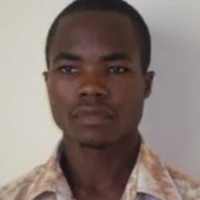International Journal of Information Technology and Computer Science (IJITCS)
IJITCS Vol. 11, No. 2, 8 Feb. 2019
Cover page and Table of Contents: PDF (size: 503KB)
An Efficient Data Analysis based Flood Forecasting System (EDAFFS)
Full Text (PDF, 503KB), PP.38-47
Views: 0 Downloads: 0
Author(s)
Index Terms
Flood forecast systems, Wireless sensors network, Data analysis
Abstract
Among natural disasters observed each year, flood represents 40% and remains one of the most important problems that many governments want to solve. Each year flood is responsible for many damages that cost a lot of money and even lot of people’s life. To reduce these damages caused, flood forecasting and warning systems which are able to alert people when a flood occurs have been built. However, most of these flood forecasting systems(FFS) are usually designed for specific regions and mostly for developed countries and are not suitable for developing countries because of climatological and environmental parameters difference. The problem of flood forecasting in developing countries could be explained in one part by the lack of meteorological stations and hydraulic stations necessary for flood forecasting systems to make predictions. Moreover, existing flood forecasting systems, have forecast accuracy problem because of constant changes of the environment and climate usually caused by anthropic factors. To face these problems, this work proposes an auto-adaptive flood forecasting system based on hydraulic models and data analysis techniques on meteorological and wireless sensors networks data to realize reliable forecast. The large number of experiments conducted show that the solutions proposed in this work performed well.
Cite This Paper
Joel TANZOUAK, Blaise Omer YENKE, Ndiouma BAME, Rene NDOUNDAM, "An Efficient Data Analysis based Flood Forecasting System (EDAFFS)", International Journal of Information Technology and Computer Science(IJITCS), Vol.11, No.2, pp.38-47, 2019. DOI:10.5815/ijitcs.2019.02.05
Reference
[1]http://www.emdat.be/database, “Emergency database,” 2017.
[2]J. T. Snow, “Non-traditional approaches to weather observations in developing countries,” report on International Finance Cooperation Group, 1-48, 2013
[3]V. Seal and A. Raha, “A simple flood forecasting scheme using wireless sensor networks,” International Journal of Ad hoc, Sensor and Ubiquitous Computing, vol. 3, no. 1, p. 16, 2012.
[4]K. K. Khedo, “Real-time flood monitoring using wireless sensor networks,” The Journal of the Institution of Engineers Mauritius, p. 11, 2014.
[5]V. Thiemig1 and B. Bisselink1, “A pan-african medium-range ensemble flood forecast system,” Hydrology and heart system science, vol. 19, p. 21, 2015.
[6]F. Pappenberger, K. Beven, and al, “Cascading model uncertainty from medium range weather forecast (10 days) through a rainfall-runoff model to flood inundation predictions within the european flood forecasting system (effs),” Hydrology and heart system Science, vol. 4, no. 9, 2005.
[7]S. J. and Ootamakorn, “Real-time monitoring and warning system,” Songklanakarin Journal of Science and Technology, vol. 2, no. 33, p. 8, 2011.
[8]B. Boulton and T. van Kalken, “Hydraulic models needed for flood forecasting,” Water Engeneering Australia, June 2011.
[9]H. Cloke and F. P. b, “Ensemble flood forecasting: A review,” Journal of Hydrology, June 2009.
[10]A. A. Pasi and U. Bhave, “Flood detection system using wireless sensor network,” International Journal of Advanced Research in Computer Science and Software Engineering, vol. 5, no. 2, 2015.
[11]E. Basha and D. Rus, “Design of early warning flood detection systems for developing countries,” in the proceeding of IEEE, bangalore, India, 2007.
[12]D. J. e. a. Parker, “The amma rawinsonde programs and its implications for the future of atmospheric monitoring over africa,” Bulletin of the American Meteorological Society, 815827, 2008.
[13]D. Atlas and C. W. Ulbrich, “Use of rain fade in wireless telephone signals to locate and estimate intensity of precipitation,” Journal of Applied Meteorology, 16, 13221331., 1977.
[14]A. Berne and R. Uijlenhoet, “Path-average rainfall estimation using microwave links: uncertainty due to spatial rainfall variability,” Geophysical Research Letters, 34, L07403, 2007.
[15]F. Fenicia, L. Pfister, D. Kavetski, P. Matgen, J. Iffly, L. Hoffman, and R. Uijlenhoet, “Microwave links for rainfall estimation in urban environment: Insights from an experimental setup in luxembourg-city,” Journal of Hydrology, 464465, 6978, 2012.
[16]H. Leijnse, R. Uijlenhoet, and J. N. M. Stricker, “Rainfall measurement using radio links from cellular communication networks.” Water Resources Research, 43, W03201. Messer, H., A. Zinevich, and P. Alpert, 2006: Environmental Monitoring by Wireless Communication Networks. Science, 312, 713, 2012.
[17]J. Brotzge, K. Hondl, B. Philips, L. Lemon, E. Bass, D. Rude, and D. Andra, “evaluation of distributed collaborative adaptive sensing for detection of low-level circulations and implications for severe weather warning operations,” Journal of Forecasting, 17318, 2010.
[18]K. S. Indira Priyadarshinee and C. Mallick, “Flood prediction and prevention through wireless sensor networking (wsn): A survey,” International Journal of Computer Applications, vol. 113, no. 9, p. 7, march 2015.
[19]J. Thielen, J. Bartholmes, and al, “The european flood alert system part 1: Concept and development,” Hydrology and Heart System Science, vol. 13, 2009.
[20]A. Ari, A. Gueroui, N. Labraoui, and B. O. Yenke, “Concepts and evolution of research in the field of wireless sensor networks,” International Journal of Computer Networks and Communications (IJCNC), vol. 7, no. 1, January 2015.
[21]J. Tanzouak, N. Bame, B. Yenke, and I. Sarr., “Sytem to improve numeric wheather predictions for flood forecasting systems,” in theproceeding of IEEE-SITIS conference, Jaipur, India, 2017.
[22]J. Tanzouak, B. Yenke, N. Bame, and I. Sarr, “System to extend forecast capacity of meteorological stations,” in the proceeding of ACM-ICGDA conference, Prague, Czech Republic, 2018.
[23]R. Cortes, X. Bonnaire, O. Marina, and P. Sensa, “Stream processing of healthcare sensor data: studying user traces to identify challenges from a big data perspective,” Elsevier Journal: Procedia computer science, vol. 52, 2015.

